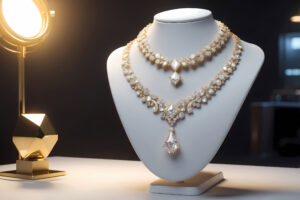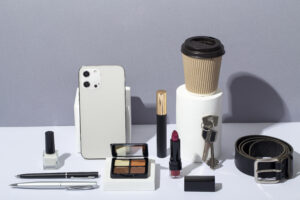You find something online. It looks just like that luxury bag you’ve had your eye on. The color, the stitching, even the logo, spot on. And it costs way less. The seller says it’s “almost identical.” But let’s pause there.
That one word, almost, is doing a lot of work. Because when it comes to authenticity, “almost identical” still means not the real thing. And if you’re someone who values genuine products, whether you’re buying or selling, this difference matters more than ever.
Let’s break down why.
The Outside Can Lie: How Fakes Fool the Eye
Knockoffs have come a long way. Some counterfeiters use the same color palettes, mimic stitching patterns, and even copy serial numbers. Photos online are often of the real item. So when the product shows up and it looks almost the same, many people think, “Well, that’s good enough.”
But it’s not. Looking the same isn’t being the same.
Let’s say you’re holding two watches. One is a $5,000 original. The other is a fake worth $100. They might look alike for a few seconds. But under real-world use, scratches, water, temperature, or time, only one is going to hold up. The other will expose itself fast.
And that’s the trick with “almost identical.” It only fools you until it doesn’t.
The Real Cost: Counterfeits Are Big Business
Here’s something most people don’t realize: the fake goods industry is massive. In 2021, counterfeit goods accounted for around $467 billion in global trade. That’s 2.3% of total global imports, according to the OECD.
And it’s getting worse. By 2030, experts predict the counterfeit trade will hit $1.79 trillion, growing to nearly 5% of global trade. Think about that. One out of every twenty dollars in global imports could be spent on something fake.
That’s not a niche problem. That’s a global one.
What’s Hiding Beneath: Material, Craftsmanship, and Ethics
Real luxury goods are not just priced for their looks. You’re paying for:
- Durability: Authentic materials last. Counterfeit ones peel, chip, or break.
- Craftsmanship: Real artisans make real things. Fakes cut corners, literally.
- Comfort: Whether it’s the lining of a shoe or the weight of a pen, original items are designed for real use.
- Safety: Ever thought about what’s inside a fake perfume or lipstick? Some knockoffs contain harmful chemicals. That’s not just bad business, it’s dangerous.
- Ethical production: Big brands are (and should be) held accountable for how they treat workers and comply with environmental regulations. Fakes don’t follow rules, many are linked to child labor, unsafe conditions, illegal factories, and harmful practices that bypass environmental laws.
So while you may be holding something that looks like a designer wallet, you’re actually holding something that represents none of the quality or values behind the original.
Brand Backing Isn’t Just a Name, It’s a Promise
When you buy something genuine, you’re not just buying an item. You’re buying the brand’s guarantee.
That includes:
- Warranties and service: Something breaks? You have support.
- Returns and exchanges: Wrong size or color? Legitimate brands fix that.
- Authentication records: You can prove your item’s real. That matters if you ever resell it.
- Customer care: From sizing help to repairs, good brands stand by their buyers.
Fake sellers vanish after the sale. They don’t pick up your calls. They don’t respond to your messages. And they definitely don’t issue refunds. When things go wrong, and they often do, you’re on your own.
It’s Not Just About You: How Fakes Hurt Everyone
Buying a fake doesn’t just affect your experience. It impacts an entire chain of people who’ve worked hard to build something real.
Here’s how:
- Design theft: Every knockoff is stolen work.
- Job loss: Counterfeits hurt real designers, artisans, and retail workers.
- Brand dilution: When fakes flood the market, it lowers the value of the original product, even for people who paid full price.
- Criminal networks: Many counterfeit operations are tied to global organized crime, funding illegal activities far beyond the sale itself.
And the impact runs even deeper. In 2022 alone, the counterfeit goods industry caused a $174 billion loss in worldwide sales tax revenue and affected up to 5.4 million jobs globally.
When you buy a fake, it doesn’t just cost you. It costs workers, businesses, and even your local economy.
Fake Feels Fake: The Customer Experience Falls Apart
There’s another piece we don’t talk about enough: what owning a fake feels like.
At first, it might feel like a steal. You got the “same look” for less. But then:
- It wears out faster.
- You worry someone might notice.
- You stop using it because it doesn’t hold up.
- You can’t resell it.
- You lose respect for it, and maybe yourself a little too.
The bitterness of poor quality lasts long after the sweetness of a low price fades. And that’s exactly what “almost identical” gets you.
Why Appearances Can Be Misleading: Consumers Are Getting Fooled
Think you’d never fall for an almost identical? You’re not alone. But you’re also not immune.
A recent study found that nearly 70% of consumers were deceived into buying counterfeit products online, many without realizing it until later. The photos looked good. The reviews seemed legit. But the product wasn’t real.
In a world of online shopping, filters, and doctored listings, even the most careful shopper can get tricked.
Don’t Just Look, Check: How to Think Beyond Appearances
The truth is, counterfeiters are betting on one thing: that you won’t ask too many questions. That you’ll see “close enough” and click Buy Now.
Here’s how to change that:
1. Check the source
If the product is listed on a random site, sold through DMs, or priced way below normal, it’s probably fake. Stick to official websites, authorized dealers, or platforms with verified resale processes.
2. Inspect the details
Logos slightly off? Stitching a little messy? Missing tags, booklets, or packaging? These are signs. Brands are consistent for a reason.
3. Ask for proof of authenticity
Receipts, certificates, serial numbers, authentication cards, these are part of the purchase. No seller of real items should hesitate to show them.
4. Learn the story behind the product
If you’re buying a luxury shoe or handbag, read up. How is it made? Where is it made? What materials are used? Knowing the answers helps you spot when something doesn’t line up.
5. Trust your gut
If something feels off, don’t brush it aside. There is such a thing as a deal being too good. Counterfeiters count on hesitation or wishful thinking. Trust isn’t just about price — it’s about peace of mind.
6. If it seems too good to be true, it probably is
There is such a thing as a deal being too good. Extremely low prices for high-end goods are often the first red flag. Counterfeiters count on the lure of a bargain to override common sense.
The Real Cost of “Almost”
Let’s say you saved $500 by buying a fake. But you lost:
- The ability to return it
- Access to support
- The original experience
- The resale value
- Your peace of mind
And maybe worst of all, you gave money to someone who profits off deception, while hurting real creators.
So, what did you actually gain?
Where Trusted Authentication Fits In
This is where services like TruLux come in. They’re not just about telling real from fake. They’re about preserving the experience.
When you use a trusted authentication service, you’re not just verifying a product, you’re protecting:
- The money you spent
- The story behind the product
- The confidence of gifting or reselling
- The long-term value of what you own
Trusted platforms like TruLux take the stress out of second-guessing. They give buyers and sellers the confidence that what they’re handling is the real deal.
Final Thought: Real Means More
In a world where almost identical look better than ever, choosing real is no longer just a product decision, it’s a value decision. And that value is more than material. It’s about respect, for yourself, for the craft, for the people behind the product.
So next time someone says, “It’s almost the same,” remind them:
Almost the same still means fake.
Conclusion
Genuine products offer more than just appearance, they carry quality, ethics, trust, heritage, and long-term value. Almost identical might copy the look, but they can’t copy the substance or the story behind it. Choose real, not just for the product, but for the experience, the history, and the peace of mind that comes with it.
Image Credits: <a href=”https://www.freepik.com/free-photo/front-view-boys-looking-each-other-with-copy-space_6743313.htm”>Image by freepik</a>







